August has been quiet on the Curio but the house has actually felt more like a NASCAR pit area with kids, summer jobs, and such. I’m here this week with something perfect for the season: a sourdough, blitz puff pastry tart flavored with smoked paprika and cornmeal. Easier than classic puff these come together quickly. Hope everyone is well as we head into baking season. Enjoy these fall-colored beauties! They’re easier than you think!
In the past week our weather has shifted. While the cicadas still grind and whir all night, I ran through a patch of pumpkin-colored leaves on the trail today. My daughters have left for college and, after a few months of slower mornings, we’re back to packing Arlo’s lunch each day. From the kitchen, to the trees, to the quiet of a small house with fewer people, these signs confirm the close of our shortest New England season.
Endings, in many ways, define the change from summer to fall: no more beach trips, less daylight, kids living their lives in other places. But what feels heavy — and where I get bogged down — is in the enlarging of my post-peak dread. I take the annual change and I make it something bigger, tying the seasonal shift to the largest rhythms we have in some grand metaphor: here I am, living the spring, summer, fall and winter of life.
These feelings zip into view like a road sign then remain on my dash for miles: What is left? What is new at the end of summer? If life builds from buds, to fruit, to harvest, what happens next? Renewal, decline?
I was in the woods with all of this on my mind, feeling melancholy about the whole thing, and from nowhere (or from everywhere) an answer came in the form of a refrain. Like a mantra, a phrase, a presence, or feeling, in no uncertain terms, it settled the matter at hand, saying, there is still time.
I’m not sure what that means. But I think it relates to the idea that if I am present, then I am full. If I am present, then I’m still moving. If I am present, as evidenced by my anxiety about the cooler days and a quiet September (which my dear colleague, David, reminds me, is still summer), it’s ok. Just keep baking. Just keep going. There is still time. We’re here, y’all. Let’s cherish every bit of it.
I was in Maine at the Kneading Conference in late July, teaching, catching a couple workshops, and seeing dear friends, old and new. In one class, Arturo Enciso made demi-baguettes using masa (nixtamalized corn, used for making corn tortillas, tamales, etc.) in the dough. Corn is on my list of most-loved grains (did you make the Italian sticks? I also wrote a sourdough cornbread for King Arthur this summer). Even at a relatively low percentage the corn came through in Arturo's baguette, bringing beautiful color and its entirely unique aroma.
Thinking of ways to put some to work in pastry, I remembered a puff recipe I wrote using sifted blue corn flour. Inspired by that, and by a sourdough pie crust I wrote this spring, I came up with this. For the hydration, all the moisture comes from ripe sourdough culture. To that flavorful base I add smoked paprika, black pepper, and plenty of good butter. A full bake maximizes the crispness which is a great contrast to the incredibly flaky and tender pastry. Let’s make them.
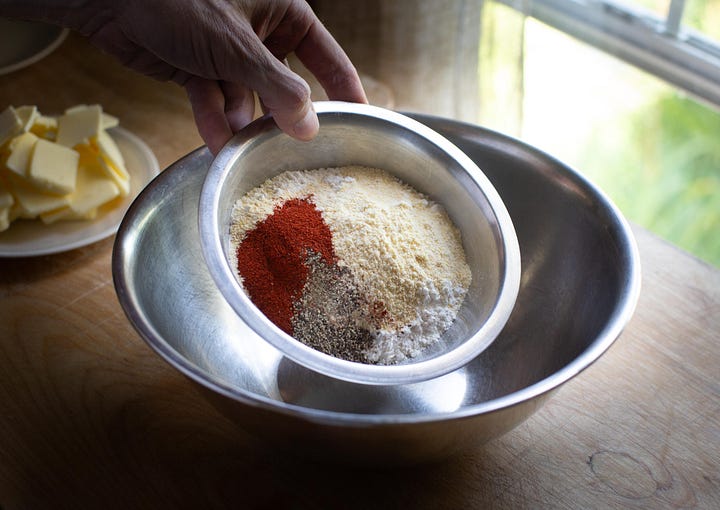
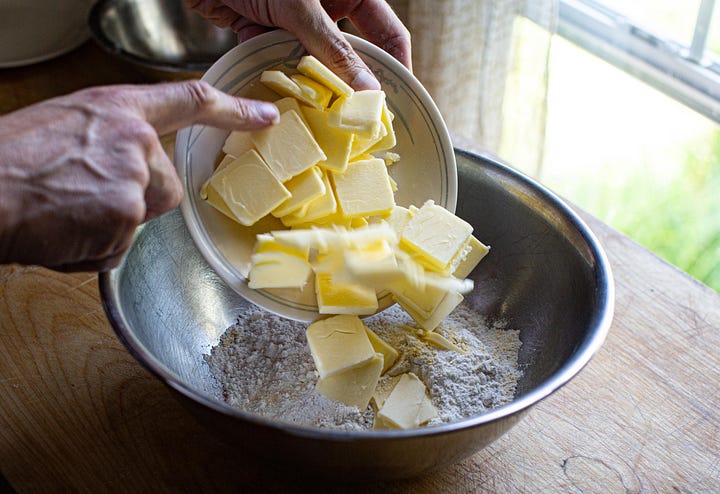
Cornmeal, 50g (best quality)
All-purpose flour, 150g
Salt, 4g (generous ½ t)
Paprika, smoked, 6g (2 ½ t) (for more spice use chipotle pepper powder)
Black pepper, 3g (1 t)
In a medium bowl combine the dry ingredients. Put in the freezer to chill while preparing the butter.
Butter, unsalted, cold, 200g (a little less than two sticks)
Cut the cold butter into thin slices then toss to combine with the chilled dried ingredients.
Working with your fingers, massage the butter into the dry, leaving some larger pieces.
Sourdough (liquid levain)*, 100g
*This should be ripe liquid levain culture comprised of equal parts flour and water by weight. If you’d like to build to bake, combine 40g of all-purpose flour with 40g of tepid water and 20g of sourdough culture and leave at room temperature for 12 to 24 hours. Sourdough’s contribution to the puff is largely flavor — discard that hasn’t separated is also an option here if you have it.
Add the sourdough culture to the mixture, stir briefly, then dump the contents onto a work surface.
Press, roll, and fold, reflouring and turning as necessary to keep the dough from sticking. In warmer months the dough will soften quickly, requiring more bench flour during rolling and cutting.
Roll the dough into a rectangle, roughly 12" by 8", cover well, and chill until firm, 30 minutes or up to 24 hours. For longer storage, freezing works well (fully defrost until it’s pliable enough to roll before proceeding).
If you've chilled the dough for more than 30 minutes, or if it feels especially firm, let it warm briefly, 30 minutes or so at room temperature for easier rolling. Roll the dough to 12” by 16” or 18”. Rolling the dough to this dimension will help give you the right thickness.
A quick note on the cutters. I have round cutters which nest and come in diameter increments of 1" or so. They range down to about 2" and up to about 5". They are a great tool for cutting biscuits, crackers, rolled out cookies, chausson aux pommes, and so forth.
For these tarts I've been cutting mine at 4”, they’re large enough to be a perfect side for a light lunch with a salad or maybe some soup (I eat two!). You can make them as small or large as you like, the main thing regarding the rings is that the smaller ring should be 1” smaller than the larger one, leaving a ½” collar that will contain a variety of filling textures (from loose and flowing to stiff).
To shape the tarts, cut as many 4" pieces as you can from the initial dough piece. Set them aside while you work with the scrap pieces, gently pressing them or rolling as necessary, cutting as many additional rounds as possible. As usual, refer to the videos for a better picture.
Once I have 10 to 12 of the 4” circles cut out, I set aside 8 pieces that will become the tops and start cutting 3” circles from the inside of each piece to form the upper collar piece. (During assembly you'll stack the two pieces so that your fillings don't flow over the edge.) After cutting out the circles I reroll the scrap, for a total of 8 collar pieces and 8 bases with a little dough remaining. With any amount of scrap that remains, try your hand at a closed shape like an empanada, it’s a great dough for that use.
Before assembling, chill the pieces briefly, allowing them to firm up for easier handling. To assemble, brush the pieces with water and stack the collars atop the bases, pressing gently to seal.
Once assembled, return the pieces to the fridge to chill again while gathering the toppings and fillings. Also preheat the oven to 400°F or 425°F if your oven runs cool at all.
Egg wash, 1 egg, whisked
Time to bake. Fillings are entirely up to you: Sausage and fig with balsamic glaze and greek yogurt after the bake, buffalo chicken with blue cheese and celery, white beans with smoky cheese and herbs, the options are endless.
Here, in the video version, I’ve used a base of chipotle peppers in adobo followed by fresh yellow tomato, roasted chicken, and some cheddar cheese. After the bake I finish with fresh sweet corn, shaved cabbage, sour cream, pickled onions, minced jalapeños, and diced tomato. In the photos you’ll see some differences, I made some with hominy and pieces of Morningstar black bean burger. I don’t think you need a full recipe here, just have fun!
Bake for 20 to 25 minutes, taking them to full color in order to maximize the amount of moisture loss during baking. As with all puff pastry, a full, full bake is key to flakiness. Underbaking or pulling too early is a surefire way to have a pastry that isn’t crisp or snappy. The top and bottom of the pastries should have full color — look at the pictures here for guidance.
Enjoy the bake,
Martin

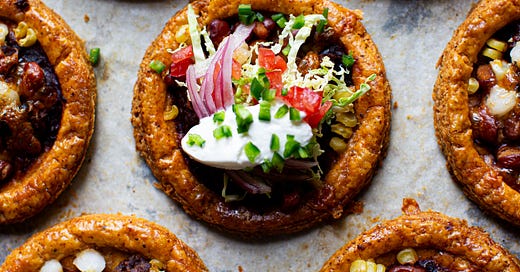


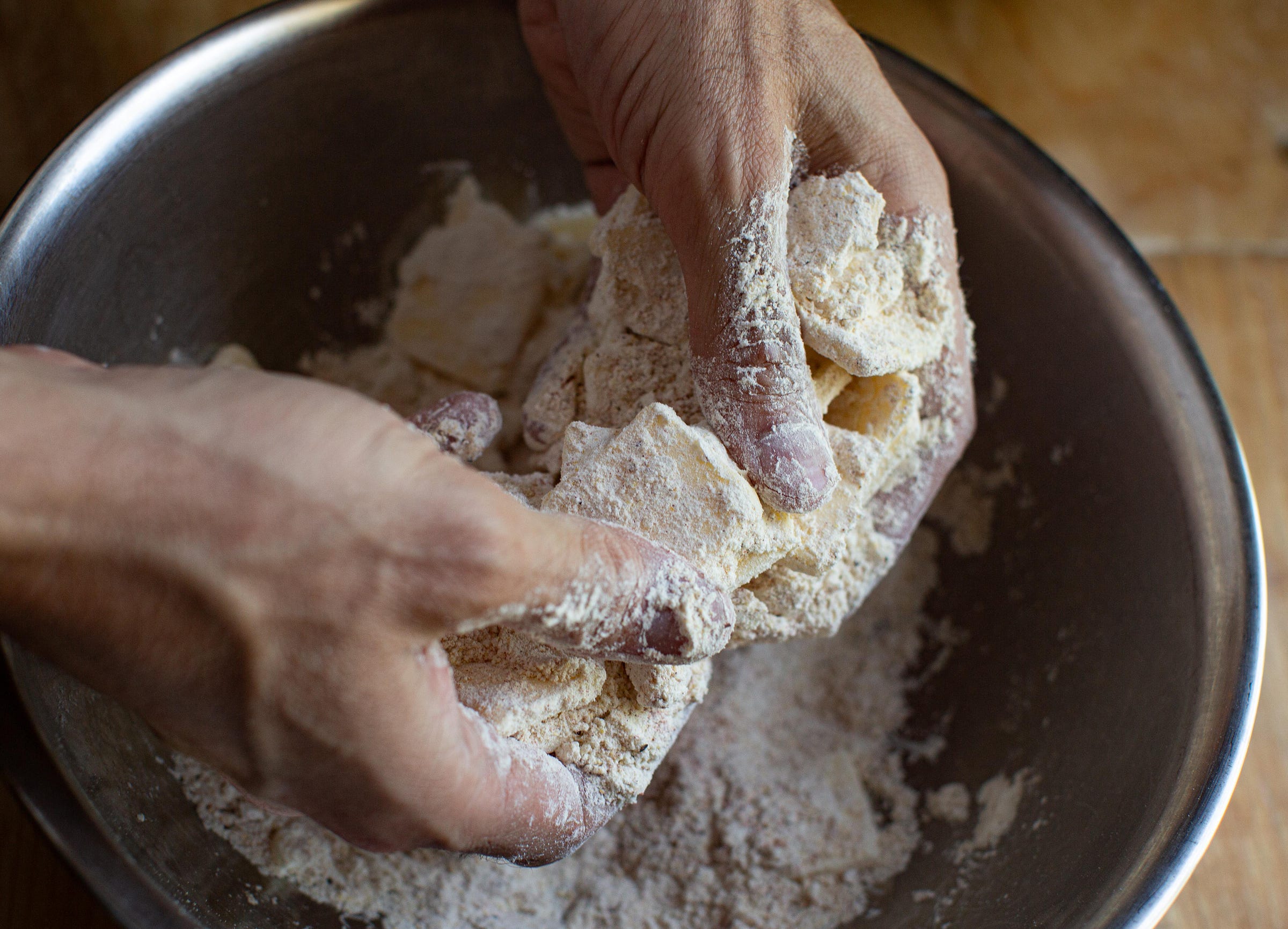
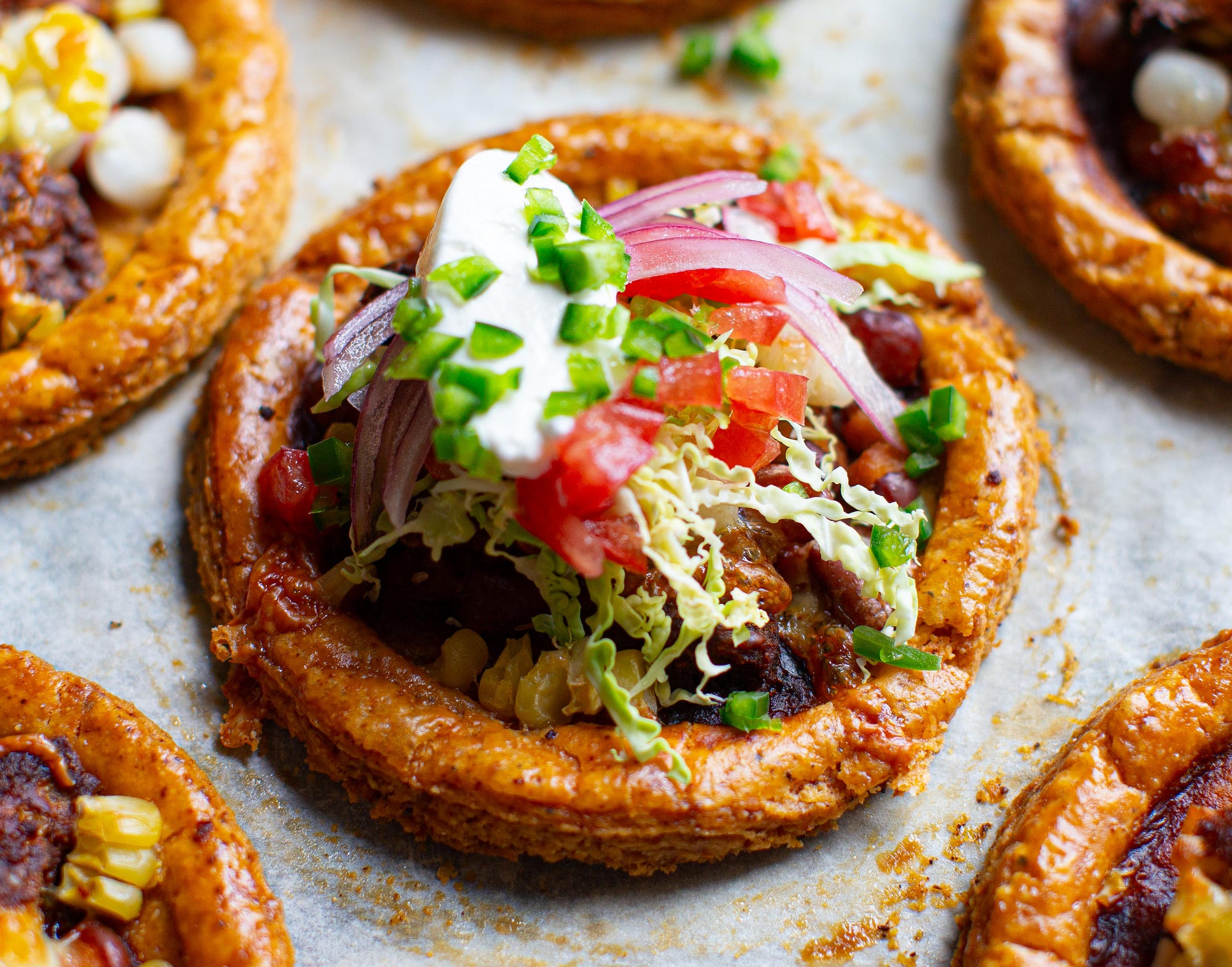
Gorgeous encapsulation of late-summer angst. Thank you, Martin. Also, these look to me like puff pastry sopes—why have I never seen these before??
Corn is so fascinating. I started a spreadsheet a couple years ago when I learned that I like grits. It was the only way I could teach myself the difference between masa, polenta, cornmeal, grits, etc. It was far more involved than I had imagined.
BTW, was the Woody-esque sentence structure you embedded Arlo's name in intentional? I laughed. I liked it.